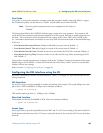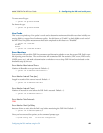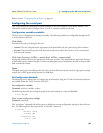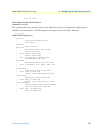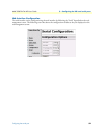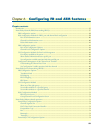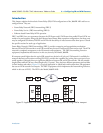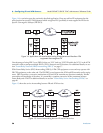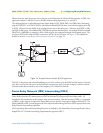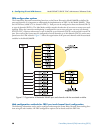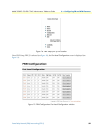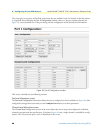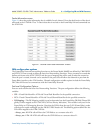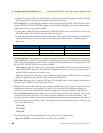
Introduction 55
Model 3096RC G.SHDSL T-DAC Administrators’ Reference Guide 6 • Configuring FR and ATM features
Introduction
This chapter explains the three basic Frame Relay (FR)/ATM configurations of the 3086FR IAD and how to
configure them. They are:
• Frame Relay Network (FRN) interworking (FRF.5)
• Frame Relay Service (FRS) interworking (FRF.8)
• Ethernet-based Frame Relay/ATM operation
FRF.5 and FRF.8 are two agreements between the FR Forum and ATM Forum that enable FR and ATM net-
works to be used together; along with the Ethernet-based Frame Relay operation configuration, the three ports
may be configured as Ethernet, FR/PPP and ATM with the ability to route between these three ports. Consult
the specific sections for each type of application.
Frame Relay Network (FRN) Interworking (FRF.5) provides a mapping and encapsulation mechanism
between FR and ATM networks so an ATM network may be used to transport FR from end-to-end. The ATM
network is completely transparent to the FR network and equipment. The IWF (Interworking Function
equipment) implements this function; in this case, done by the Model 3086FR.
If transport speeds higher than the typical FR network are desired or if only an ATM network is available for
transport between two locations running FR, FRF.5 provides the capability for joining these two types of net
-
works together. Obviously there are significant differences between FR and ATM networks. FR uses variable-
length frames while ATM uses a fixed-length cells (53 octets). They also have different parameters and variables
in their headers and trailers.
Figure 13 is a typical application in which both end locations have FR equipment
but uses an ATM network for transport. The IWF is equipment which implements the Interworking Function,
which in this case is FRF.5. The IWF is the Model 3086FR IAD.
Figure 13. Application with both end locations having FR equipment but using ATM for transport




